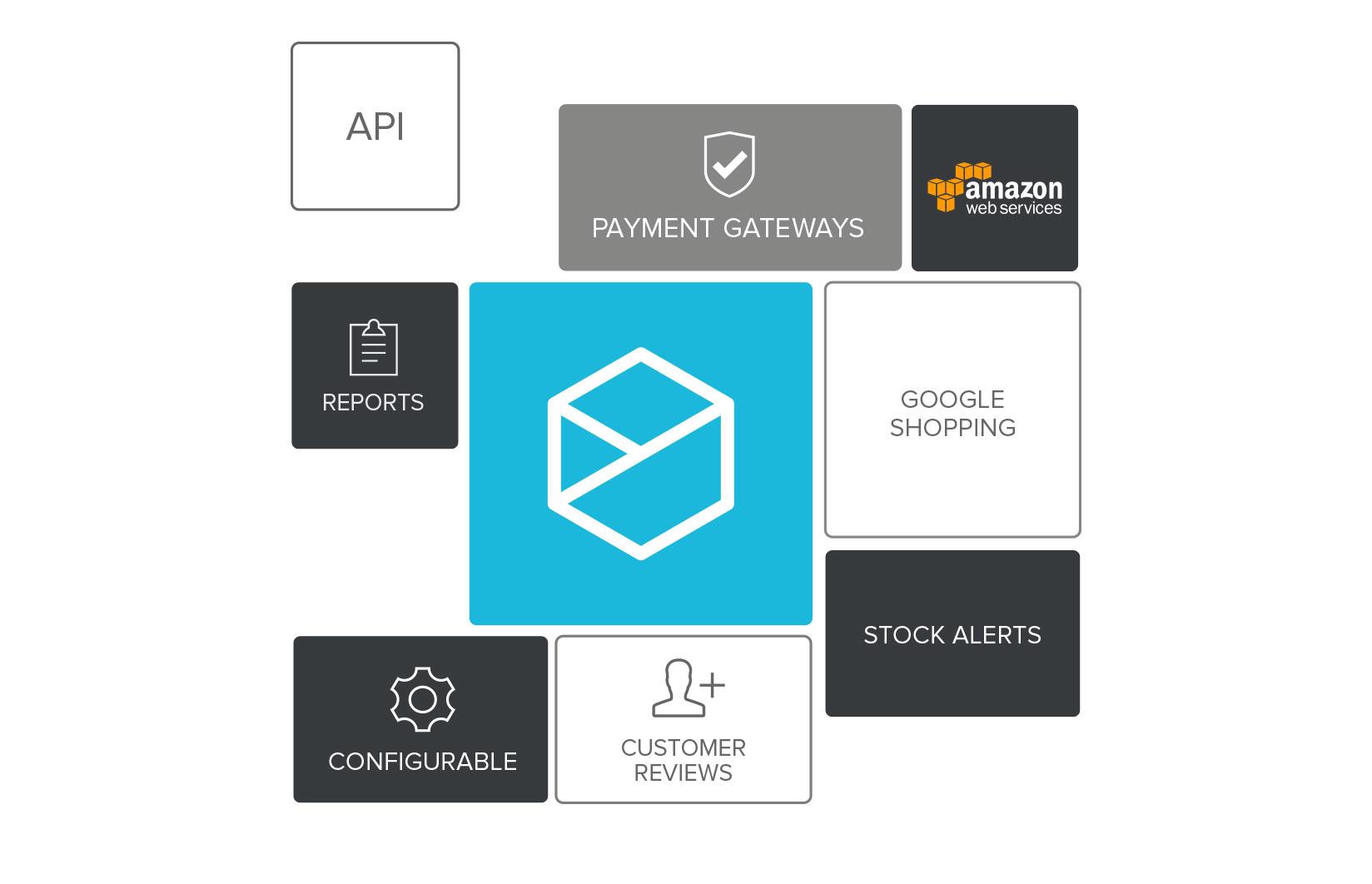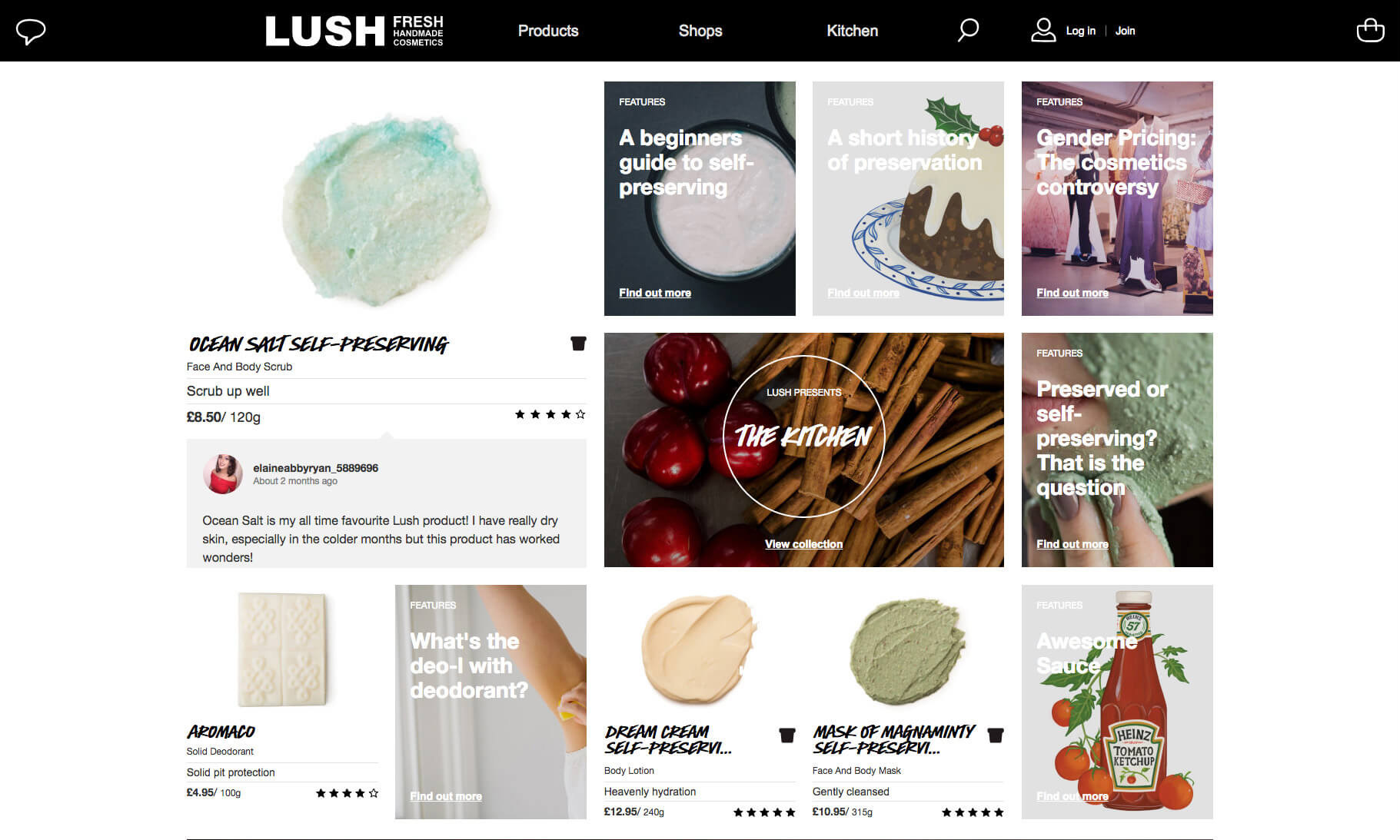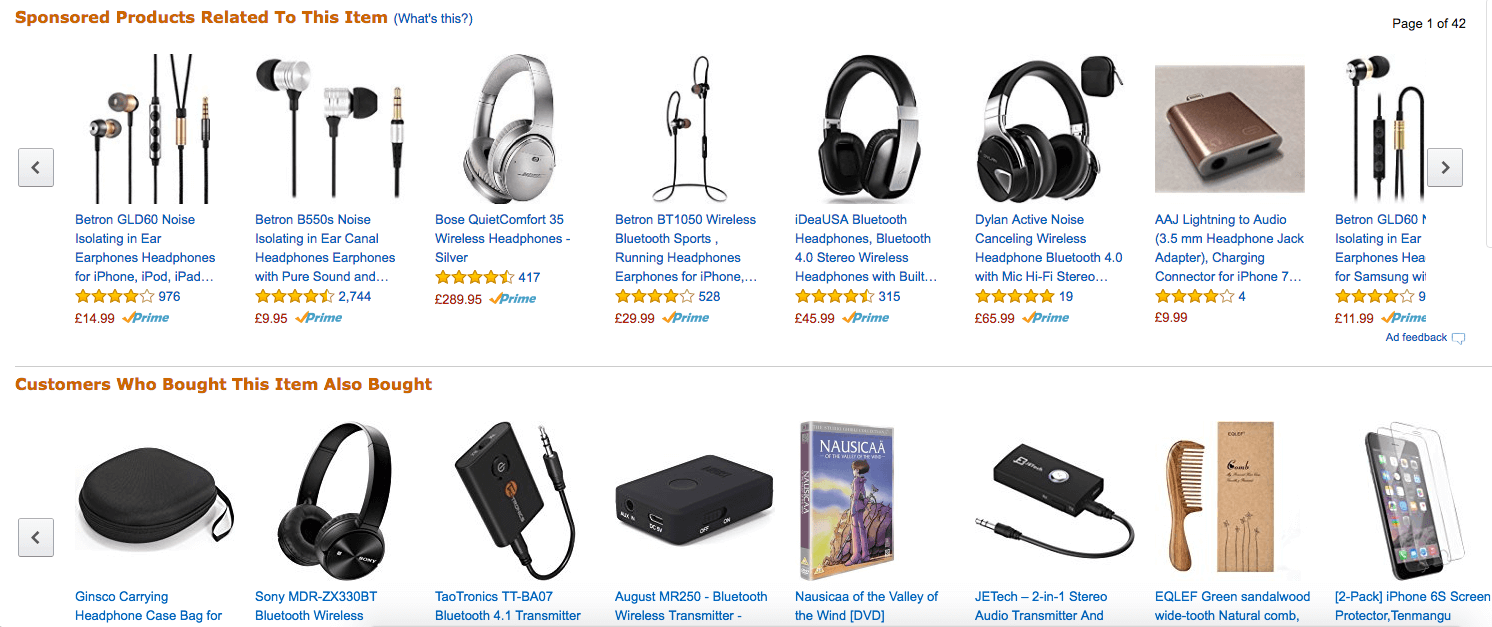Online retail is the main economic growth driver in the UK, Europe and North America and the forecasts for 2018, even with the impending Brexit looming over us, online shopping is still expected to continue to grow. According to Statista, UK retail eCommerce sales are expected to grow to £76.41b by the end of 2018. With new eCommerce stores continually entering the marketplace, it goes without saying that as an online store owner, you need to make sure that your website is fit for purpose and up to the competition. Speaking from experience of previously owning our own online store, our eCommerce Store Checklist is designed to make sure you’re online ready for 2018.
When we launched our online store back in 2005, the main purpose was to really get an understanding of how an online store operated in the business sense. At that time, online shopping was just beginning to take off, but the rapid progression over the 5 years our store was operational, was phenomenal. Since that time, as already much has changed, but the fundamentals of business and operational management of an online store are pretty much still the same.
1. Make it personal – do you know who your customers are?
Knowing who your customers are and how you can best engage with them through personalised offers and marketing messages is absolutely essential. One-to-one personalisation is something all online stores need to master so that each customer feels unique and special. You need to know what your customer wants before they know it themselves and then give it to them. Segmenting your database will help you develop customer retention as well as encourage them to tell their friends and family how amazing your store is.
Analyse customer activity using a RFM (recency, frequency, monetary) system. This will help determine quantitatively who are your best customers by examining how recently a customer has purchased (recency), how often they purchase (frequency), and how much the customer spends (monetary). RFM analysis is based on the marketing axiom that "80% of your business comes from 20% of your customers”. This is why it is so important to understand which customers are shopping with you on a regular basis, who is spending the most and who hasn’t purchased from you recently. This will enable you to drive targeted campaigns to the different types of customers.
2. Mobile friendly – is your site responsive?
So, I am sure you are already aware, but just in case you have been trying to avoid facing up to it, mobile devices account for more than half of online sales. With 4 out of 5 consumers using their smartphones to shop online, mobile is now predicted to account for around 70% of all eCommerce traffic, therefore your eCommerce site NEEDS to be responsive. It is forecasted that 2018 will see mobile devices reaching even greater heights of domination over desktop and laptops, so you have to be in it to win it. Customers have a limited attention span and because they are undoubtedly already using online stores that are responsive, an unresponsive store is a challenge that most of us can’t be bothered to tackle and so will just leave the site.

This could also be a good time to re-assess your whole website from a UI/UX (User Interface / User Experience) point of view, because if your website is not responsive it will probably be in the position where you will need to re-design the site to accommodate all devices and screen sizes.
Wire framing your website prior to re-build allows you to access the UI/UX, SEO, user flow etc prior to design and development stages. This is important, as millennials that feel their mobile experience with a brand is poor, they will be less inclined to use other offered products.
This is why wire framing the website is so important as you can consider all aspects of the consumers experience prior to embarking on any expensive design and development work. Some companies also recommend a mobile first approach which has its advantages, but the most important factor is to determine your target market and then wireframe for your use, i.e. if 78% of your traffic is on mobile then you need to concentrate hard on your mobile wireframe.
Check out our blog post on the benefits of responsive design.
3. Operational efficiency – have you a clear delivery and returns policy and does it work?
Delivery and return of your goods and services is one of the biggest challenges for any online store. This area of a business can be the most challenging from both the customers perspective (giving them what they want, when they want, preferably next day or even same day) and the cost implications for the business, ie should we do free delivery and returns, absorbing the costs to make us more attractive, or should we charge? If we charge, how can we sell this to the customer and make them willing to pay for it when they could potentially get it for free off another online store? Research shows that a high percentage of customers are willing to pay for delivery if speed is of the essence. So, stock control, efficient order/delivery processes will all enable an online store to be in a good position to be able to charge for delivery.
This in itself leads us to think about the number/value of individual orders, repeat orders and the likelihood of what our rate of returns might be? Ideally, we want no returns (hurrah), but this is never going to happen, so we need to reduce the chances of return to the absolute minimum, which in itself leads to all kinds of other operational questions, such as stock availability, quality control and making sure product descriptions are accurate and not misleading.
4. Master the art of stock control
Ok, so we know delivery is a challenge, but managing stock/merchandise is truly an art. It took us two years to really understand stock control and get a grip of buying it in and turning it over. We were really struggling to cope with managing the buying process – worried if we didn’t buy the latest item (lighting in our case), then when we wanted it we might not be able to get it (heavy sales patter from the salesman). We wrote to Johnny Boden to seek his advice and he very kindly invited me to us to his office/factory on the edge of London for a very helpful and informative face-to-face chat. We also talked to Nick Robertson of ASOS, who responded with some great advice. Both of them, without exception, told us that understanding your customer and having the stock, in the right quantities, turning it over within a given period was crucial to keeping the business financially stable. Stock has to earn its place on the shelf and can’t sit gathering dust. It has to sell. It must turn over. So, in a nutshell, this became our approach to stock:
- Understand what your customers want, what quantities they are likely to buy and when they are likely to buy
- Know your marketplace and who your direct competitors are
- Know your top selling items, make sure you always have a supply and implement a re-order level system to trigger when stock is low
- Don’t be tempted to stock every item in a product range, be selective and keep the products you choose to sell to a manageable level
- Don’t be pressured into buying bulk quantities and too far in advance from suppliers (this is where the sales rep and their well rehearsed patter comes into play – beware!)
- Always carry the lines you know sell well (this is where analysing your sales is crucial) and be more conservative about new lines that you know little about
- If you are a small business, don’t tie all of your cash up in stock unless you are absolutely sure you can sell it quickly
- If something isn’t selling, get ride of it and get your money back. Put it on offer, but get rid of it and get the money back into cashflow
- Market, market and then market again – always be thinking ahead when it comes to the marketing your stock and keep in regular contact with your customers with offers, promotions and news about new lines
5. Technical excellence and ability to adapt
You want to be successful, that’s why you went into business, in-fact, it’s why we all go into business. More than likely you have invested not only your hard earned money, but your business also takes the bulk of your time. With this in mind, it is critical that the platform you choose to operate your online store on is the best it can be and geared towards your needs not just now, but also in the future.
Ensure the platform you choose to run your store on is flexible enough to grow with you as your business grows such as the Purveya eCommerce platform. A modular constructed platform means you can start small, keeping financial investment to a minimum launching with the most basic and essential elements of an online store and then add new features as your business grows and cashflow allows.

Analytical tools are absolutely essential to understanding your customers, but also needed to analyse your sales, hourly, daily, weekly, monthly and annually. Spotting trends and customer behaviour and being able to respond quickly is so crucial. This is one of the areas of online retailing that when I was running my own store, I identified as a critical need, but the system I was on didn’t have these capabilities. So, when we built our own eCommerce system (Purveya) we made sure we had all of the analytical and management tools we knew an online store needs to be managed well and therefore provides the best chance of being successful.
6. Usability and content – talk to your customers, not at them and and make sure your imagery reflects your brand
Customer experience is a hot topic and ties beautifully into ensuring your site is responsive, as we’ve already discussed. Easy navigation through ensuring the structure of your website is organised in such a way that it is both easy for visitors to browse and easy for search engines to understand it.
Update product descriptions that sell. Think from your customer’s point of view, providing them with the information they would want, in an engaging way. Offer tips on what the product can be styled with and link related products on the page. Remember, when refreshing text, be careful that this only has a positive effect on your SEO. A popular way to communicate product descriptions is by bullet pointing key benefits and features.
Beautiful imagery and photography are so impactful and should never be under-estimated. Investing in good imagery could mean an increase in sales by 9.46% as a result of updated product photos. When uploading new images, include multiple shots and allow your customers to zoom in on pictures to gain a better impression of how a product looks. You could even include a video, to give the full 3D effect of your product, allowing customers to see what they’re considering purchasing from every angle. Compress photos where possible, as you don’t want to slow down the speed of your site. Also, ensure you have included information relevant to the photo. For instance, if you have a picture of a model wearing your product, tell customers what size they’re wearing and the model’s height.
7. Assess your SEO tactics to keep on top of Google’s algorithms
In general, eCommerce sites don’t rank as well as content sites in search engines, but it’s vital to take the time to keep up-to-date with SEO, as Google is constantly changing its algorithm.
Adding specific content to your website, like a blog or knowledge section, can maximise its SEO potential. However, make sure you look at it from an end user perspective. Will it help your customers? Is it informative and interesting? Then look at it from an SEO angle. Creating this rich content, and integrating your products into the feature, will help enhance your SEO.
The cosmetic company, Lush, are a brilliant example getting the balance between mixing content with products together to create a more lifestyle view or magazine feel.

When adding new products, you need to consider the pages SEO. Good information architecture, website structure and internal links are all critical to rank new product pages well. Link categories from your home page, and the products parent categories, to ensure that Google finds, crawls and indexes your content fast.
A common mistake on an eCommerce site is to place the brand in front of the product name. This can be counter productive as all your products then get optimised for the brand name first, so a) they will compete against each other and b) if the brand itself ranks high, your product page will be attempting to compete against a big brand. The best practice is to place the brand behind the product name so that you gain more traffic for the product itself.
Here are some key steps to ensure that your site is optimised for your target audience, and meets your own goals and objectives:
- Set up goals and objectives of what you want to achieve, and then work with your development company towards clear achievable business objectives.
- Next, a technical audit of your website is essential, as it allows us to check the website has no fundamental architectural or structure issues that need to be resolved prior to commencing any SEO work. The SEO tasks may be counterproductive until the technical issues are resolved.
- Setting up goals and events allows us to understand your audience and how they interact with and buy your services or products.
- Keyword research is one of the most important aspects of SEO as ranking for the right keywords can give you high returns. By researching your market’s keywords we can learn not only which terms and phrases to target, but also learn more about your customer base as a whole.
- Before we can put together a successful SEO plan / campaign, we would recommend carrying out a competitor content analysis, competitor backlink research and onsite content analysis. This allows us to address any content gaps, and better understand successful competitors have done to date.
- As part of the SEO campaign, we also provide tracking and reports based on the results of the campaign against the SEO goals and objectives.
For more information and support regarding your site’s SEO, get in touch with us.
8. Use Social Media to drive engagement and increase website conversions
It’s 2018, and so I am sure you know how important Social Media is for any business, big or small. There are endless ways an eCommerce site can utilise various social channels to reinforce customer engagement, so if you aren’t prominent on Social Media already, pick a few of our tips and give it a try.
Invite customers to share their experience on Social Media, posting photos with your products on Instagram, leaving reviews on Facebook and mentioning your brand on Twitter. Say your main product is yoghurt, why not ask your customers to show the most imaginative ways they use your product. Smoothies, muffins, soup and salad dressings – the possibilities are endless! Not only does this drive interaction with customers, but it also illustrates the versatility of your product, without you even having to do any of the work! You can run a competition to encourage this engagement, handing out rewards for the best picture.
Give your followers exclusive offers as thanks for their support on Social Media. Post selected discounts on social channels only, making followers feel that extra bit special. Ask them to tag their friends in your pictures, and in return they will be entered into a prize draw.

This is an excellent strategy for brand awareness and exposing your products to a larger audience. Try creating a unique company hashtag and tell customers about it on your posts, in your email campaign and on your printed marketing materials, (brochure, packaging) encouraging your customers to engage with you, as well as making it easier for you to keep track of what people are saying about you online.
Deal with customer queries publicly. Don’t shy away from handling complaints in the public eye, asking unhappy customers to Direct Message you. This will only elongate the problem and it will look like you have something to hide. And anyway, what if another customer is experiencing the same issue? You want your followers to find the solution quickly and see your excellent customer service in helping followers efficiently - you may even get regular customers jump to your defence.
Social Media is an exciting concept, and is a great way to target specific locations, conversations and audiences, but it is vital to only implement these tactics on the channels that are right for your target market. Picking only a few channels, but doing them well, will make a huge difference compared to you putting your message across several platforms and not having the time to maintain all of them.
Put together a monthly social media calendar, marking important industry events and company milestones. You will be able to schedule these in and fill in the gaps with customer reviews, product pictures and generic memes and quotes, which are always a big hit online.
9. Remove friction to help prevent basket abandonment
According to Ovum UK approximately 52% of shoppers abandon baskets due to friction in payment processes – don’t lose out on sales as a result of this. Take some simple steps to ensure a straight forward checkout processes, and most importantly, happy customers!
- Account creation. This is sometimes an issue for some customers as they don’t want to waste time filling in every single detail about themselves just to buy one item. So, we need to make it as simple as possible for them as gathering their data is very important from our view point. You could eliminate the process, although this is something I really would not recommend. As an alternative, you could always provide the option to create an account after purchasing has been complete, or offer a reward for completing their details, ie discount code for the future of even for the item they are buying.
- Save billing and shipping info for future visits via either tokenisation or make sure you’re PCI compliant.
- Reduce the number of pages. Nothing is more annoying then having to fish back through pages of forms to correct a mistake or edit details. In the checkout process, keep everything simple and on one page. Give the option to auto-fill the billing address to be the same as the shipping address, and ensure that forms for personal details are all on the same page, only redirecting when necessary.
- Make sure the default shipping option is the cheapest. Don’t be that company to rip your customers off. Illustrate your customer service by offering the cheapest shipping option as a default, or even offer it for free!
- Provide several ways for customers to pay. No two customers are the same, so have a payment option to suit everyone. This can include debit and credit cards, PayPal, with the option to pay after delivery and Amazon pay.
- Provide several delivery options. Furthermore to the above point, have a delivery option to suit every customer’s needs. As well as home delivery, provide the option of Collect+, Inpost 24 lockers or in-store pickup. Also, have the option to pick a suitable delivery time, providing evening, next day and weekend slots.
- Add exit intent software. When a visitor is viewing your website, you can display a customizable and targeted pop-up based on their actions on your site. e.g. if they try to leave the site, designated amount of time, hover over a link etc. The pop-up will then allow you to capture a new leave, gain a sale, or simply keep them engaged for longer.
10. Upselling and merchandising
How you organise or merchandise your products is so important because it affects 2/3rds of all sales. Grouping your products or services also contributes to a User’s overall experience, so it cannot be emphasised enough how important this is for your online store. Through good grouping, you can continuously promote your products to your customers, even during the payment process. Add related products or offers at different stages of the buying cycle i.e. product page, basket page and checkout, and even when the order is complete, add a call to action like ‘continue shopping’.
Amazon is a great example of this. On their product pages you’ll find suggestions of what other similar items customers have bought and even in the email summery of your purchase they include a few upsells to entice you back to buy more.

As mentioned earlier, on product pages, link related items that can be used or worn with that product. Have a system in place to analysis what is in a customer’s basket, and then promote products based on items in their basket.
When it comes to your search toolbar, use this to your advantage, by upselling similar products, or if no product is found, suggest a substitute. If a customer abandons their basked, send them an email remind them of their disregarded products. Even include alternative suggestions.
Consider upselling via bundles by analysing your customers purchase patterns or tends to what products they are buying together. If products are purchased in groups then offer it as a bundle with a small discount and up sell this bundle on each of the included product pages.
11. Set-up an eCommerce tracking system to analysis and report
There are a bunch of tools that can help you with this, and the good news is, most of them are free! We would recommend starting with the basic i.e. Google Analytics to ensure you have it running correctly on your website and that you have eCommerce tracking setup. This allows you to track conversions and analyse purchase activity on your site or app. By enabling eCommerce tracking, you can see product and transaction information, average order value, eCommerce conversion rate, time to purchase, and other valuable data.
In order for any eCommerce company to succeed and thrive online you need the data to enable you to make informed decisions. We would recommend that you analyse and report on the data regularly to keep ahead of the game.
It is no secret that Google Analytics is the vital component to any eCommerce website, but if you want to take it to the next level, there are many other analytical solutions to your needs…
One example is a tool called Hotjar that provides you with heat maps and recordings of the user’s experience. It helps you understand what users do on your site by visually representing their clicks, taps and scrolling behaviour. It also identifies visitor's clicks, taps and mouse movements so you can identify usability issues on the fly.
There most important thing to remember is that you use what is needed to analysis your business as not everyone solution will provide you with what you need and it could get expensive if you have too many, coupled with the fact that you have to spend time analysing the data from each piece of software you use.
As with any reporting, you need to fully understand what you are looking at. The stats could look fantastic, but what use are they if you don’t know what they mean? For instance, you could be gaining a lot of traffic, but this might be being generated by a search bot or spam bot, or you could be inflating your own traffic, so it’s important you filter out your IP address so as not to track yourself. Why not start by using an agency that can inform you or give you advice, as they normally have to provide this data on a daily basis to clients, so they have to keep up-to-date with changes in the industry. We would recommend this collaborative approach as over time you will learn from them and gain the knowledge.
12. Assess the standard of your Customer Service
Everyone likes a good service - it can make or break a business. So, ask yourself are you really doing everything possible to go above and beyond for your customers?
We’re not talking about just delivering your customer service policy to an excellent standard, a company’s customer service should be more than that. It aids your reputation, as you need to be gaining good reviews to enhance your SEO, causing your rankings to stand out and your website to appear higher up in search results. 77% of buyers look for reviews of products on online stores or forums before making purchase decisions.
Respond quickly and calmly to customer queries, resolving any issues that could affect their experience with your brand. Ensure your staff have clear communication skills, and are well trained on the phone to deals with customer enquiries or complaints. Create a list of answers to have in front of your team when they’re manning the phones, helping them feel prepared and your customers always getting the answers they want. Also ensure that your team have an in-depth knowledge of your product and how it works.
As an online shop, it’s important that you offer a fair returns policy, allowing plenty of time for your customers to make a decision on your product. There are distance laws that you must adhere to and so it is very important that you and your staff are aware of what these are. Free returns always helps to influence buying decisions online as the customer won’t be wasting money sending unsuitable items back. Free returns can also encourage the sale of multiple products.
Conclusion
2018 holds many challenges for all eCommerce owners both economically as well as technically, as the industry we all operate in is forever changing. We hope that this blog post has highlighted a few key areas for you to focus on and that might help you to improve your online presence and performance, or at least maybe made you think a little about changes you have been thinking about, but not yet done. Write them down and set yourself some goals for 2018, remember you’re only as good as the service you offer.
In a nutshell:
- get personal with your customers
- be mobile ready
- don’t let delivery let you down
- make sure the platform you use is fit for purpose and flexible enough to allow you to add to it as your business grows
- take control of your stock so it does not become a burden
- SEO your site so you can compete with your competitors
- use the tools available to analyse your customers and your sales
- get social and start to communicate through various social media channels
- monitor the check-out and take action to reduce basket abandonment
- upsell products through careful merchandising of products
- track movement on your website, know the habits of your customers
- and finally, you can be forgiven so many errors or blunders through practising good customer service, so never forget that without your customer, you have no business.
Now, let’s crack on ….
For information or assistance on any of our checklist, then get in touch with us today!